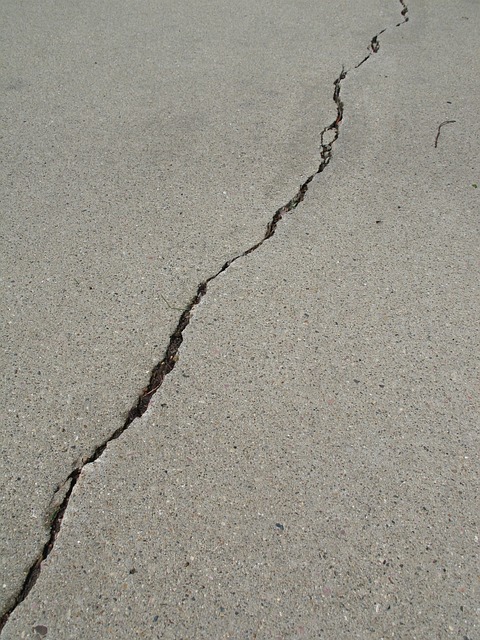Concrete driveways may develop cracks due to various factors, requiring specific repair methods for different crack types. Proper identification of hairline, joint, or structural cracks is essential, with prompt action recommended for larger cracks. Using high-quality epoxy or polyurethane fillers and appropriate tools ensures effective DIY crack repair. Regular maintenance, sealing, and drainage management prevent future cracks and extend driveway lifespan.
A cracked concrete driveway is not just an eyesore; it can compromise structural integrity and safety. This comprehensive guide delves into the intricacies of crack repair, equipping homeowners with essential knowledge. We explore various causes and types of concrete driveway cracks, from hairline fissures to wider gaps. Learn how to assess damage, prioritize repairs, and choose the right materials and tools. Discover a step-by-step approach to fixing common cracks while avoiding pitfalls. Plus, gain expert tips for regular maintenance to prevent future cracking. Master crack repair with this ultimate resource for a sturdy, appealing driveway.
Understanding Concrete Driveway Cracks: Causes and Types

Concrete driveways, despite their durability, are susceptible to cracks over time due to various factors. Understanding these causes is the first step in effective crack repair. The most common types include hairline cracks, which are typically surface-level and result from normal concrete shrinkage; these are often cosmetic and easy to fix. Joint cracks appear at the seams where concrete was poured and can widen due to shifting soil or improper expansion joints. Structural cracks, more serious and rare, may indicate underlying issues with the driveway’s foundation or support system.
Other causes include temperature fluctuations, especially rapid freezing and thawing cycles, which cause the concrete to expand and contract; this can lead to stress cracks. Traffic pressure and heavy loads can also contribute, as well as poor initial installation, including inadequate mixing or placement of the concrete. Recognizing these different crack types is crucial for selecting the appropriate crack repair method, whether it’s filling with a polymer-based sealant, replacing damaged sections, or reinforcing structural weaknesses.
Assessing the Extent of Damage: Crack Repair Prioritization

When assessing a concrete driveway for repairs, the first step is to evaluate the extent of damage, especially when it comes to cracks. Not all cracks require immediate attention, so prioritizing crack repair is crucial. Smaller cracks, often called hairline fractures, might not need urgent fixing as they could be cosmetic only and may not compromise the structural integrity of the driveway. These can be monitored for any signs of growth or widening over time.
Larger cracks, however, especially those wider than a fingernail or showing signs of progression, should be addressed promptly. These types of cracks can indicate more significant underlying issues like settlement or heave caused by soil movement or poor drainage. Prompt crack repair not only improves the aesthetic appeal but also prevents further damage and costly repairs in the future.
Materials and Tools for Effective Crack Repair

When it comes to repairing cracks in your concrete driveway, the right materials and tools are essential for long-lasting results. First, you’ll need high-quality epoxy or polyurethane-based crack filler. These materials are specifically designed to bond with concrete, offering excellent flexibility and resistance to weather conditions. They also come in various colors to match different types of concrete, ensuring a seamless finish.
For effective application, invest in tools like a putty knife, trowel, and wire brush. A putty knife helps to scoop out the crack filler, while a trowel ensures precise filling and smoothens the surface. A wire brush is useful for cleaning the crack and removing any loose debris, creating a solid foundation for the repair. Additionally, safety gear like gloves and goggles is paramount to protect against chemicals and debris during the repair process.
Step-by-Step Guide to Repairing Common Cracks

Crack repair is a common task for homeowners, especially as concrete driveways age. The first step is to assess the crack and its severity. Minor cracks, typically less than 1/4-inch wide, can often be fixed with a simple epoxy injection or a filling compound. Start by cleaning the crack of any debris using a wire brush or power washer to ensure the filler adheres properly.
Next, apply an appropriate crack sealer or epoxy according to the manufacturer’s instructions. For wider cracks (up to 1 inch), consider using a pre-mixed crack repair kit that includes a flexible polymer. Fill the crack to its full depth, smoothing the surface with a trowel. Allow the filler to cure completely before applying a topcoat of sealer for added protection and to prevent water penetration, which can cause further damage.
Common Mistakes to Avoid During Concrete Crack Repair

Concrete cracks can be both unsightly and a potential safety hazard, so proper repair is essential for any homeowner. However, there are common mistakes to avoid during crack repair to ensure long-lasting results. One of the biggest blunders is trying to fix cracks that have expanded beyond their original width. Using excessive force or inappropriate tools to open up wider cracks can cause further damage and weaken the concrete structure. It’s crucial to assess the crack’s severity before attempting any repair; if it has progressed significantly, professional intervention might be required.
Another mistake is neglecting preparation. Concrete crack repair begins with thorough cleaning of the cracked area. Removing loose debris, dust, and stains ensures better adhesion for the repair material. Using the wrong filler or sealer can also lead to issues. Different concrete cracks may require specific repair products; ensuring you have the right one for the job will prevent future problems. Additionally, inadequate sealing can result in water penetration, causing further damage beneath the surface.
Maintenance Tips to Prevent Future Concrete Driveway Cracking

Regular concrete driveway maintenance is key to preventing cracks and prolonging its lifespan. One of the most effective ways to avoid crack repair is to ensure proper drainage. Over time, water accumulation can lead to weak spots in your driveway, resulting in cracks. Regularly inspect your driveway for any signs of standing water or wet patches and address them promptly by checking and clearing drainage channels and gutters.
Additionally, sealing your concrete driveway annually can provide a protective barrier against moisture penetration. This simple step acts as a shield, preventing the harsh elements from causing damage. Cracks often appear due to shrinkage or movement in the concrete, so maintaining a consistent level of hydration and avoiding extreme temperature changes will significantly reduce these issues.
